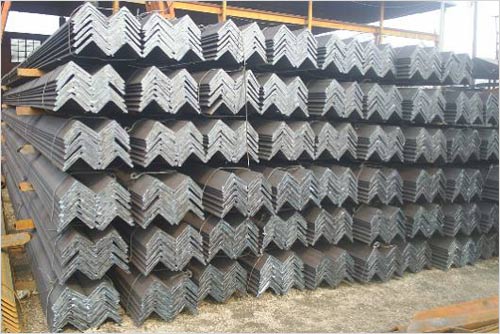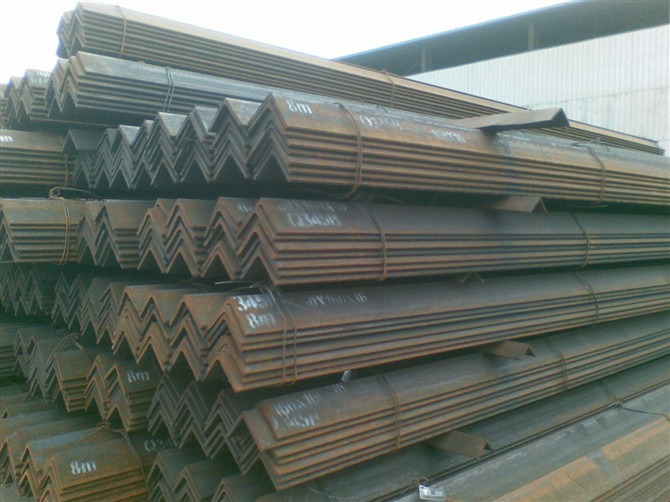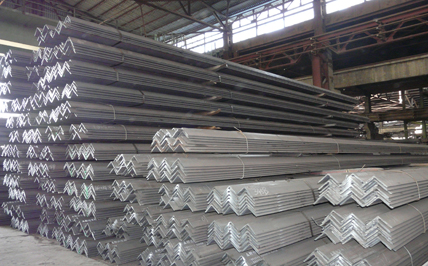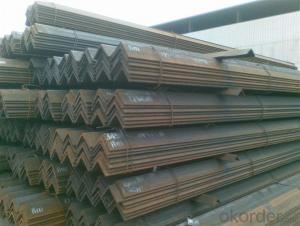equal angle steel/mild steel angle bar/carbon steel angle iron
- Loading Port:
- Tianjin
- Payment Terms:
- TT OR LC
- Min Order Qty:
- 35 m.t.
- Supply Capability:
- 35000 m.t./month
OKorder Service Pledge
OKorder Financial Service
You Might Also Like
equal angle steel/mild steel angle bar/carbon steel angle iron
Products Details:
1.Standard: AISI ASTM BS DIN GB JIS
2.Dimensions:10*10mm-200*200mm
3.Grade:Q195-Q420 Series
4.Place of Origin:Tianjin,China
5.Length:6m 9m 12m or as per request
6.Application:Building structure and engineering structure, such as the beam, Bridges, transmission tower,
lifting transportation machinery, ship, industrial furnace, reaction tower, container frame and warehouse.
7.Technology:Hot Rolled / Cold Rolled
8.Packaging Detail: Mills standard export strong packing
9.Price Term:FOB/CFR/CIF,According to clients requirements
10.Delivery Datail:7-10 Workdays after deposit
11.MOQ:25MT
12.Payment:T/T or LC
13.12.Authentication:ISO9001-2008,SGS.BV
Products Material:
Q195-Q420 Series
SS400-SS540 Series
S235JR-S355JR Series
ST Series
A36-A992 Series
Gr50 Series



- Q:How do steel angles perform under static or stationary loading conditions?
- Steel angles are commonly used in construction and engineering applications due to their strength and versatility. Under static or stationary loading conditions, steel angles exhibit excellent performance and stability. Static loading refers to a situation where a load is applied to the angle and remains constant without any motion. Steel angles are specifically designed to withstand such loading conditions. Due to their structural properties, steel angles have a high resistance to bending and twisting forces. This allows them to effectively support heavy loads without experiencing significant deformation or failure. Steel angles distribute the applied load evenly along their length, which helps to minimize stress concentrations. This property ensures that the angle can efficiently transfer the load to the supporting structure, providing stability and structural integrity. Additionally, steel angles can withstand compressive forces, which try to shorten or compress the material. The shape and cross-section of steel angles, specifically their L-shaped profile, contribute to their ability to resist compressive loading. This feature makes steel angles suitable for applications where static loads exert compressive forces, such as columns, beams, and bracing elements. Moreover, steel angles have a high resistance to shear forces, which occur when two or more parts of a structure slide or move in opposite directions. The design of steel angles, with their perpendicular legs, enhances their shear strength, allowing them to effectively resist shear loading under stationary conditions. In summary, steel angles perform exceptionally well under static or stationary loading conditions. Their structural properties, such as resistance to bending, twisting, compression, and shear forces, make them suitable for a wide range of applications in construction and engineering.
- Q:What is the maximum length of a continuous steel angle?
- Several factors determine the maximum length of a continuous steel angle, including its size, weight, transportation and handling limitations. Typically, the maximum length is restricted to what can be safely transported and handled by equipment like cranes or forklifts. This limit can vary based on the capabilities of the equipment and any transportation restrictions. The manufacturing process may also limit the length, as longer angles may be more challenging to produce or require specialized equipment. Ultimately, the maximum length should be determined based on the project's specific requirements and constraints, taking into account these factors.
- Q:Can steel angles be used for supports in bridges?
- Yes, steel angles can be used for supports in bridges. Steel angles provide structural stability and strength, making them suitable for supporting heavy loads in bridge construction.
- Q:Can steel angles be used for storage rack systems?
- Yes, steel angles can be used for storage rack systems. Steel angles provide structural support and stability, making them a suitable choice for constructing storage racks that can hold heavy loads and withstand frequent use. The versatility and strength of steel angles make them a popular choice in various industrial and commercial storage applications.
- Q:Can steel angles be used in HVAC ductwork installations?
- Yes, steel angles can be used in HVAC ductwork installations. Steel angles are commonly used to provide support and stability to ductwork systems. They are typically used as brackets or supports to secure the ducts in place and prevent them from sagging or collapsing under the weight of the air conditioning or heating equipment. Steel angles are strong and durable, making them suitable for withstanding the forces and vibrations that occur in HVAC systems. Additionally, steel angles can be easily welded or bolted together, allowing for a secure and stable installation. Overall, steel angles are a reliable and commonly used component in HVAC ductwork installations.
- Q:How do steel angles contribute to the overall sustainability of a building?
- A building's overall sustainability is enhanced by steel angles in various ways. To begin with, steel angles are constructed from recycled materials, making them a sustainable choice for building purposes. Steel is one of the world's most recycled materials, boasting a high recycling rate. This reduces the necessity for new resources and lessens the environmental impact of extraction and production. Additionally, steel angles offer structural efficiency, enabling them to support greater loads with less material compared to other building materials. This efficiency reduces the amount of steel needed for construction, minimizing the carbon footprint associated with steel production and transportation. Furthermore, steel angles are extremely durable and long-lasting. They possess high resistance to corrosion, fire, and pests, thereby reducing the maintenance and replacement requirements over the building's lifespan. This durability results in reduced waste generation and lower life-cycle costs, ultimately making the building more sustainable in the long term. Moreover, steel angles are versatile and easily reusable or repurposed. In the event of renovation or demolition, salvaging and reusing the steel angles in other construction projects is feasible. This promotes a circular economy approach, minimizing waste generation and contributing to the overall sustainability of the construction industry. Lastly, steel angles possess excellent thermal properties that can enhance a building's energy efficiency. They can be utilized as part of the building envelope, aiding in the reduction of energy consumption for heating and cooling. By improving insulation and airtightness, steel angles contribute to lower energy demand and reduced greenhouse gas emissions. In conclusion, steel angles contribute to a building's overall sustainability through their recycled content, structural efficiency, durability, recyclability, and energy-saving properties. Opting for steel angles in construction allows for resource conservation, waste reduction, and a minimized environmental impact in the built environment.
- Q:How do you protect steel angles during transportation?
- To protect steel angles during transportation, several measures can be taken to ensure their safety and prevent damage. Firstly, it is important to securely package the steel angles in a way that minimizes movement and prevents any kind of direct contact with other objects that may cause scratches or dents. This can be achieved by using suitable packaging materials such as protective films, foam padding, or cardboard sheets. Additionally, the angles should be stacked and arranged properly in the transportation vehicle to avoid shifting during transit. They should be placed on a stable and level surface, and if multiple layers are required, interlayer materials like wooden boards can be used to provide stability and distribute the weight evenly. It is also crucial to consider the climate conditions during transportation. If the steel angles are being transported in an open vehicle, they should be adequately covered with waterproof tarpaulins to protect against rain, snow, or other weather elements. If the angles are being transported in a closed vehicle, it is still important to ensure proper ventilation to prevent condensation and rust formation. Lastly, careful handling and loading/unloading procedures are essential to protect the steel angles from impacts and mishaps. The use of appropriate lifting and handling equipment, such as cranes or forklifts, should be employed to minimize any potential damage during these processes. By following these protective measures, the steel angles can be safeguarded during transportation, ensuring they arrive at their destination in optimal condition, ready for use or further processing.
- Q:How do steel angles perform in terms of thermal conductivity?
- Steel angles have relatively low thermal conductivity compared to other materials. This means that they are not as efficient in conducting heat as materials such as aluminum or copper. However, steel angles still have moderate thermal conductivity, which allows them to dissipate heat to some extent. This property can be advantageous in certain applications where heat transfer needs to be controlled or balanced. Overall, while steel angles may not have the highest thermal conductivity, they still offer sufficient performance for many structural and construction purposes.
- Q:How do you calculate the moment capacity of a steel angle?
- To calculate the moment capacity of a steel angle, several factors need to be considered. Firstly, the geometry of the angle needs to be determined, including the dimensions of the flanges and the web. The width of the flanges (b) and the thickness of the flanges (tf) and the web (tw) are crucial parameters. Next, the yield strength of the steel material needs to be known. This value represents the stress level at which the steel begins to permanently deform. It can be obtained from the material specifications or testing. The moment capacity of a steel angle can then be calculated using the following equation: Mn = Z × Fy Where: Mn is the moment capacity of the angle (in lb-ft or N-m) Z is the plastic section modulus of the angle (in^3 or mm^3) Fy is the yield strength of the steel material (in psi or MPa) The plastic section modulus (Z) is a measure of the shape's resistance to bending. It can be found in reference tables or calculated using equations specific to the angle's geometry. Once the values for Z and Fy have been determined, they can be plugged into the equation to calculate the moment capacity (Mn) of the steel angle. It is important to note that this calculation assumes elastic behavior of the steel angle and does not account for factors such as strain hardening or local buckling. Additionally, it is crucial to check the calculated moment capacity against the design requirements and safety factors to ensure the angle is suitable for the intended application.
- Q:How do you calculate the bending stress in a steel angle?
- To calculate the bending stress in a steel angle, you can use the formula σ = (M * c) / I, where σ is the bending stress, M is the bending moment, c is the distance from the centroid to the extreme fiber, and I is the moment of inertia.
1. Manufacturer Overview |
|
|---|---|
| Location | |
| Year Established | |
| Annual Output Value | |
| Main Markets | |
| Company Certifications | |
2. Manufacturer Certificates |
|
|---|---|
| a) Certification Name | |
| Range | |
| Reference | |
| Validity Period | |
3. Manufacturer Capability |
|
|---|---|
| a)Trade Capacity | |
| Nearest Port | |
| Export Percentage | |
| No.of Employees in Trade Department | |
| Language Spoken: | |
| b)Factory Information | |
| Factory Size: | |
| No. of Production Lines | |
| Contract Manufacturing | |
| Product Price Range | |
Send your message to us
equal angle steel/mild steel angle bar/carbon steel angle iron
- Loading Port:
- Tianjin
- Payment Terms:
- TT OR LC
- Min Order Qty:
- 35 m.t.
- Supply Capability:
- 35000 m.t./month
OKorder Service Pledge
OKorder Financial Service
Similar products
New products
Hot products
Related keywords




























